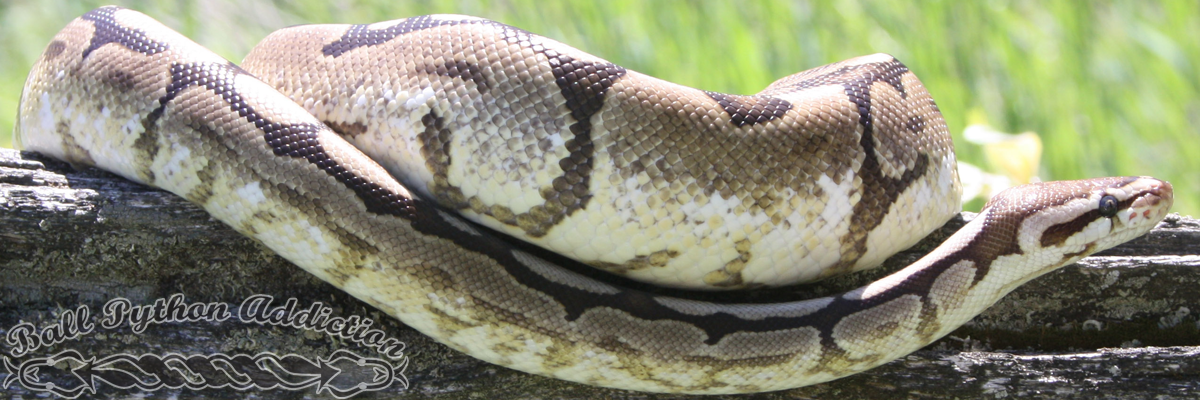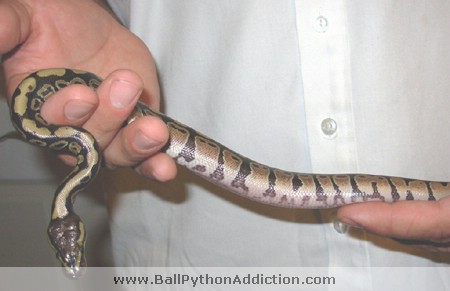Every year it amazes me to see the appeal of Ball Pythons to so many new pet keepers. Their big draw is that most are docile, they stay at a manageable size and are easy to care for once their proper husbandry are understood.
There are two options one has when choosing to purchase a ball python, captive born babies (CB) and captive hatched (CH) babies. CB specimens are those that are hatched by breeders in captivity and CH specimens are farm hatched in Africa. Adult females are captured by snake hunters and brought back to these farms and house them waiting for them to lay their eggs. Once the eggs are laid the females are released, and the masses of eggs are incubated, often in huge pits with damp saw dust. Once hatched these bush babies are immediately shipped all over the world to supply the demand in the pet trade. These little balls have yet to eat a meal, undergone there first shed, and often dehydrated when they arrive. Once acclimated and feeding they make great pets, but sometimes they may be sold before this happens creating hardship with for its new owner. Always question the source of your ball python before your purchase. We always recommend CB babies here at BPA. They may cost a little more, but a breeder has made sure that the snake has all the proper keeping right from the egg, and feeding well before being offered for sale.
Most new ball python owners will eventually discover that ball pythons are notorious for inconsistent feeding patterns. During some parts of the year, long fasts are common. They are especially common in the sub adult stages (approx.750g – 1000 g) and in adults during breeding season. Always double check that the husbandry parameters are right on, and that the snake feels secure. A simple process of just simply changing its position in a rack can make some balls unhappy and cease feeding. Some are more sensitive to environment changes and are readily stressed.
At BPA, when we offer baby ball pythons for purchase, we advise to all new ball owners to keep handling to a bare minimum in order to give the snake time to acclimate to its new environment. The move and settling into a new environment such as a tub to a terrarium, can be hard on a baby snake and they might even display signs of hissing because they are stressed. We know it is hard not to keep your hands off these little gems but, give them some time, let the baby snake settle in, feel secure and establish a weekly eating pattern. A weekly feeding hatchling is a positive sign of acclimation, and being happy. Once feeding routinely the battle is over and then we recommend that some daily interaction can take place.
We wish everyone a positive experience when starting with a new pet in 2009. Do your homework before you purchase and start off with a well started snake. It may become an addiction. It all starts with buying the first one!

